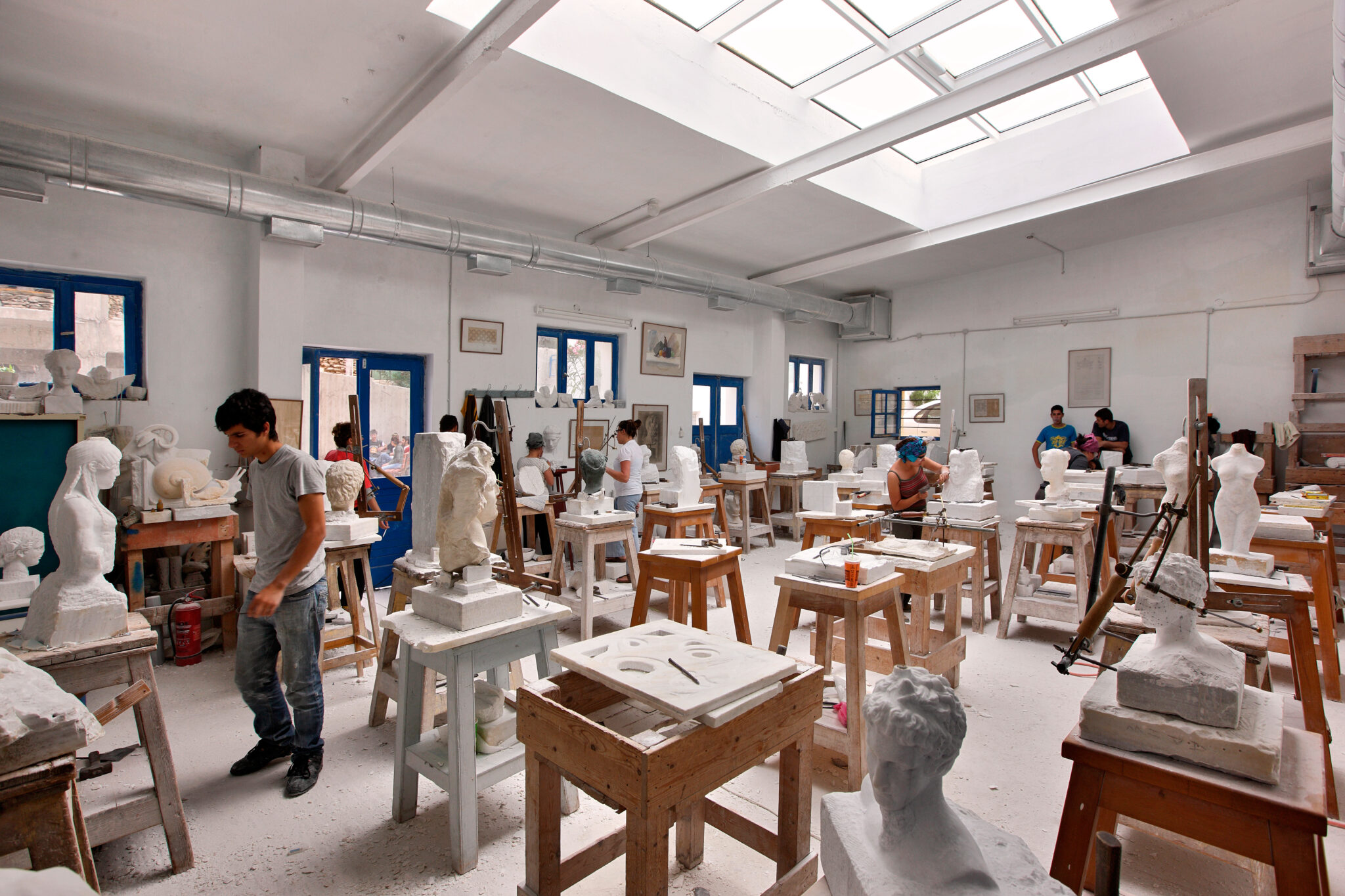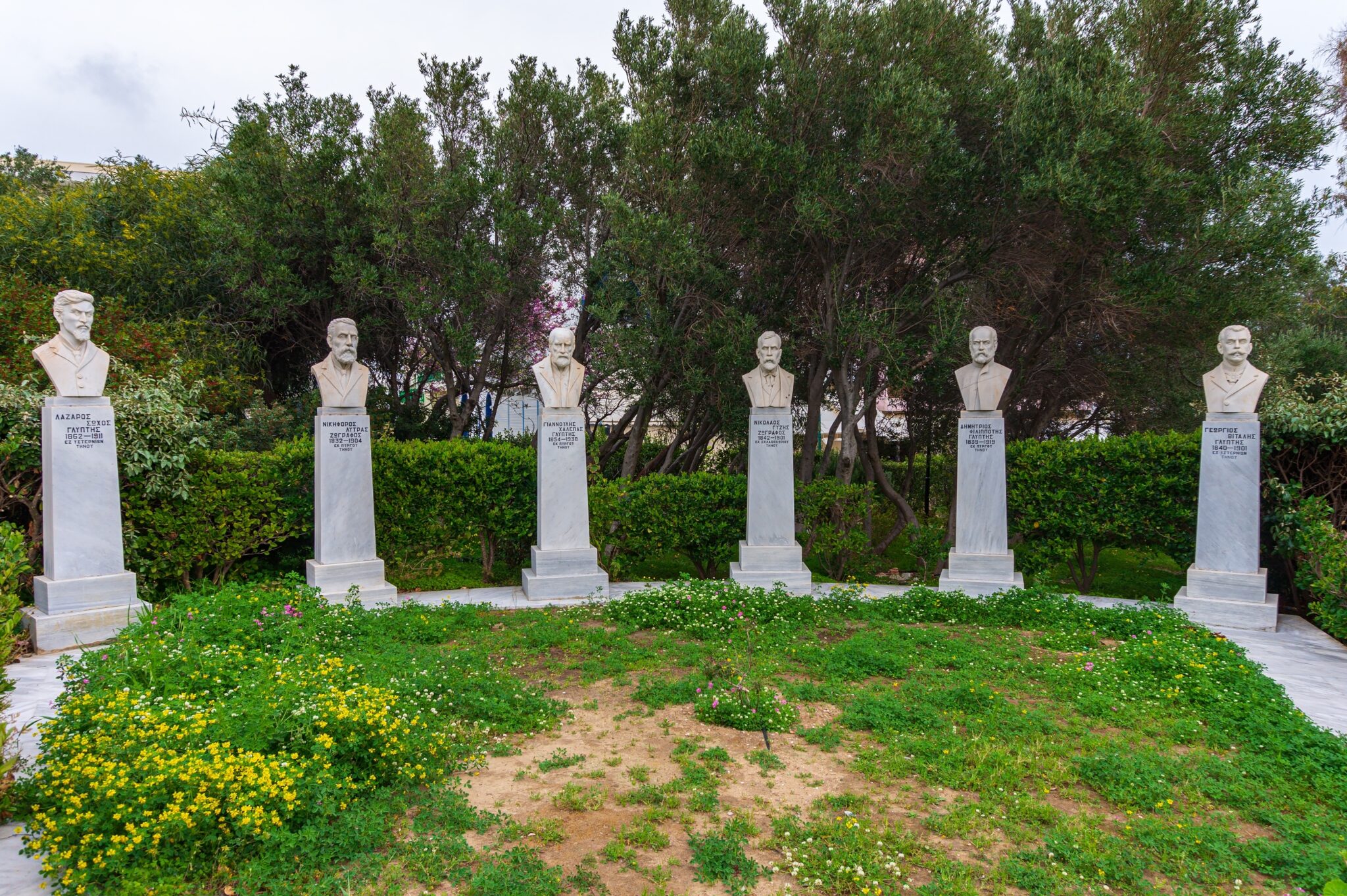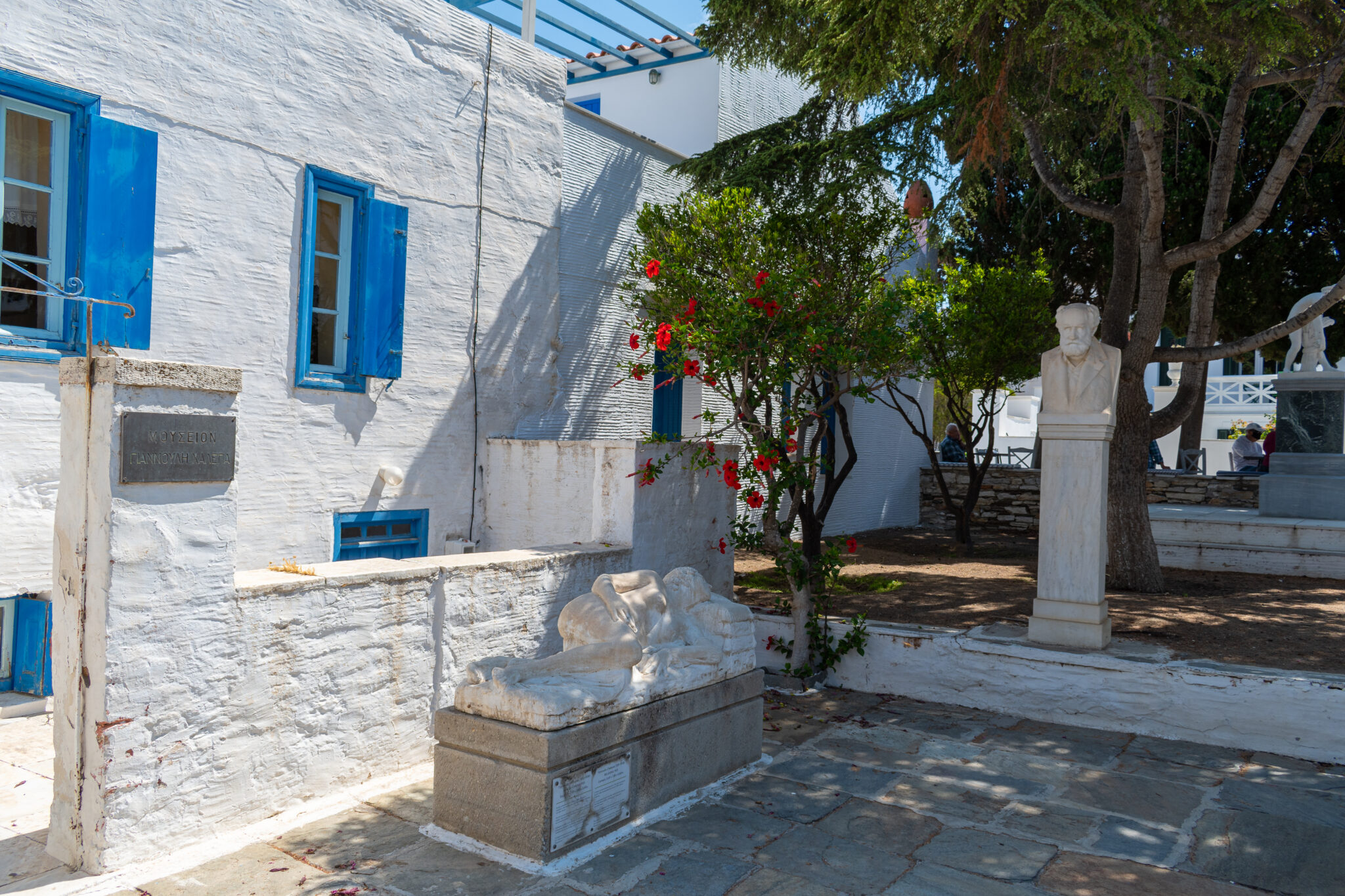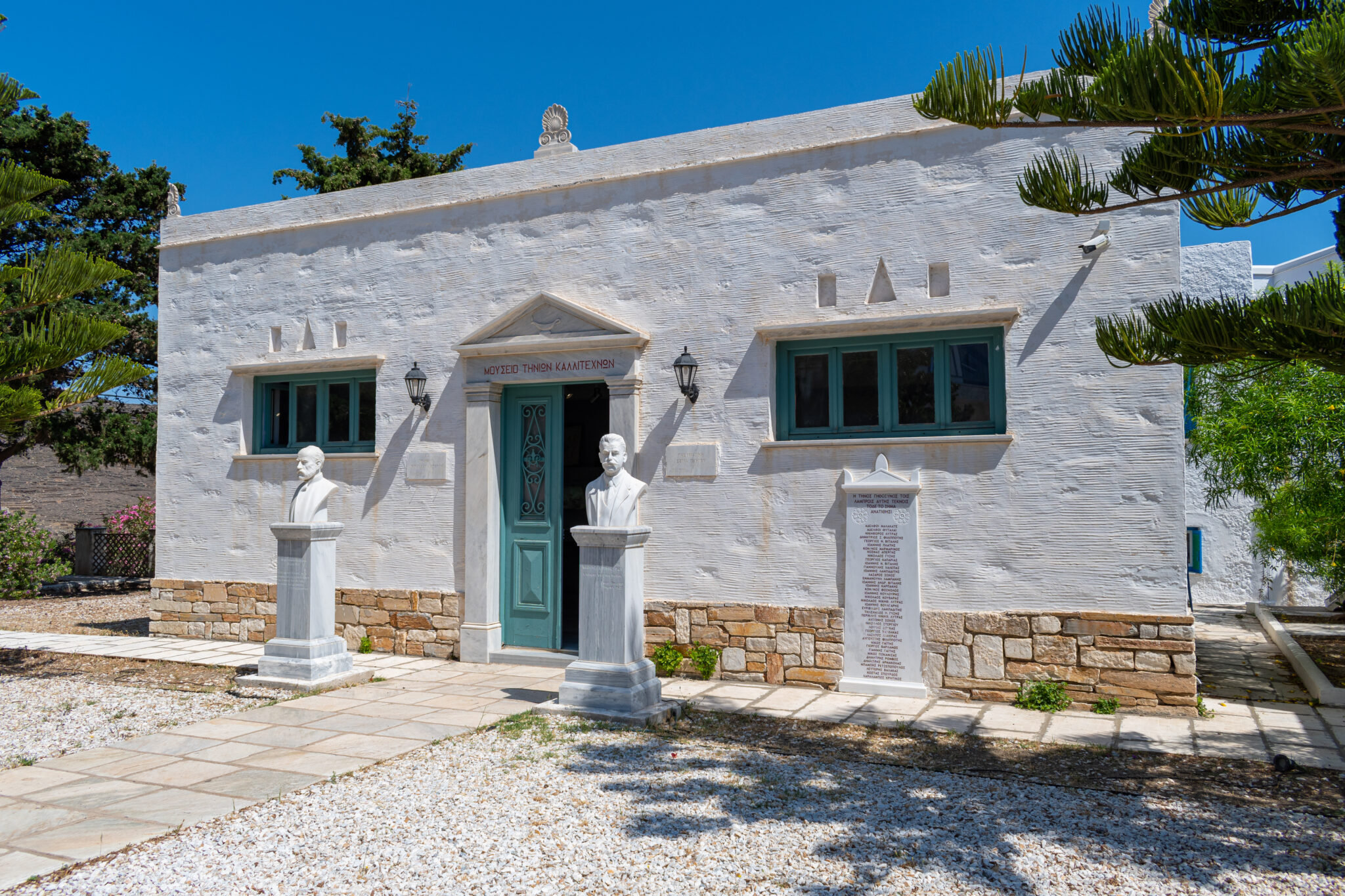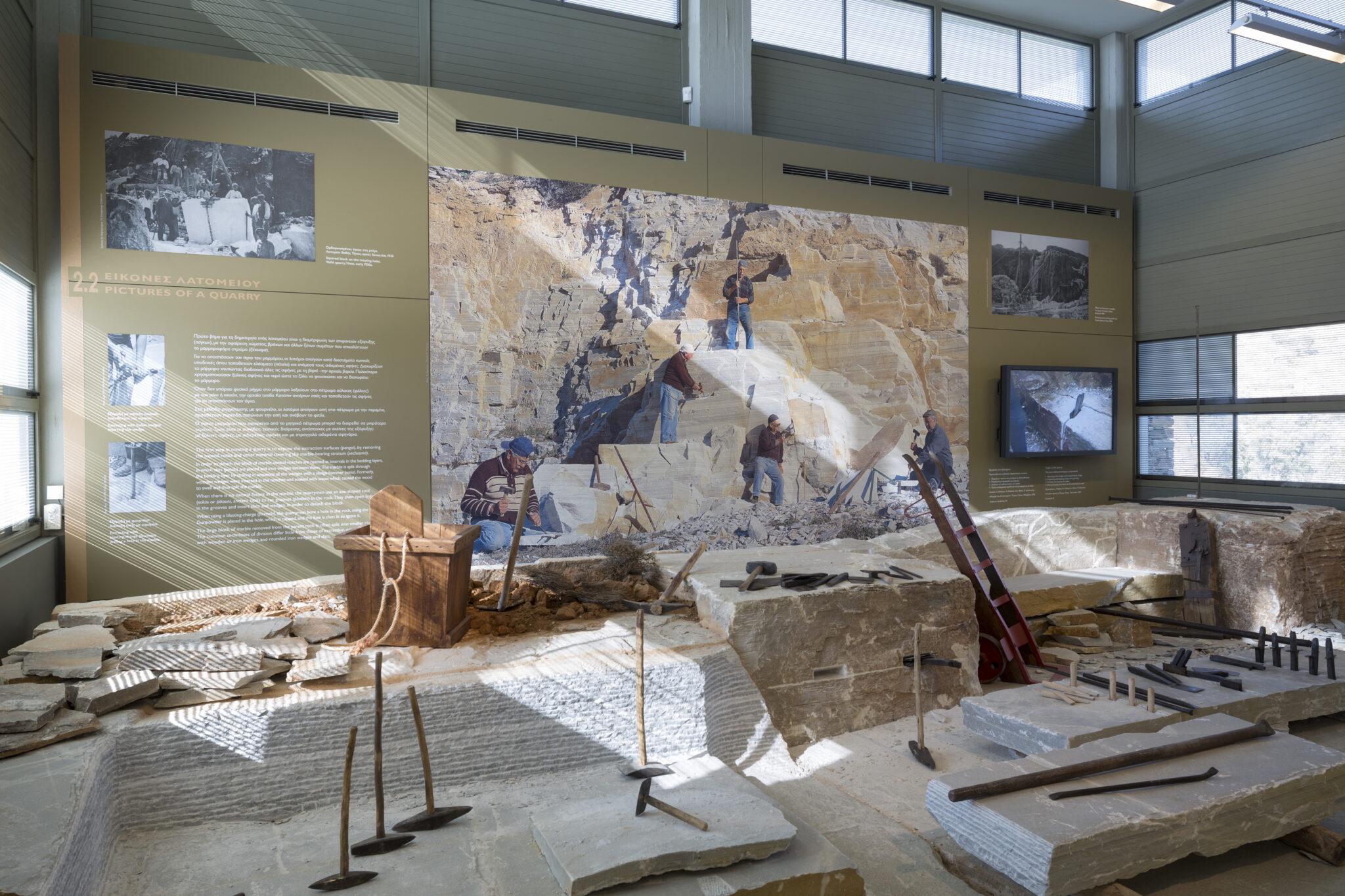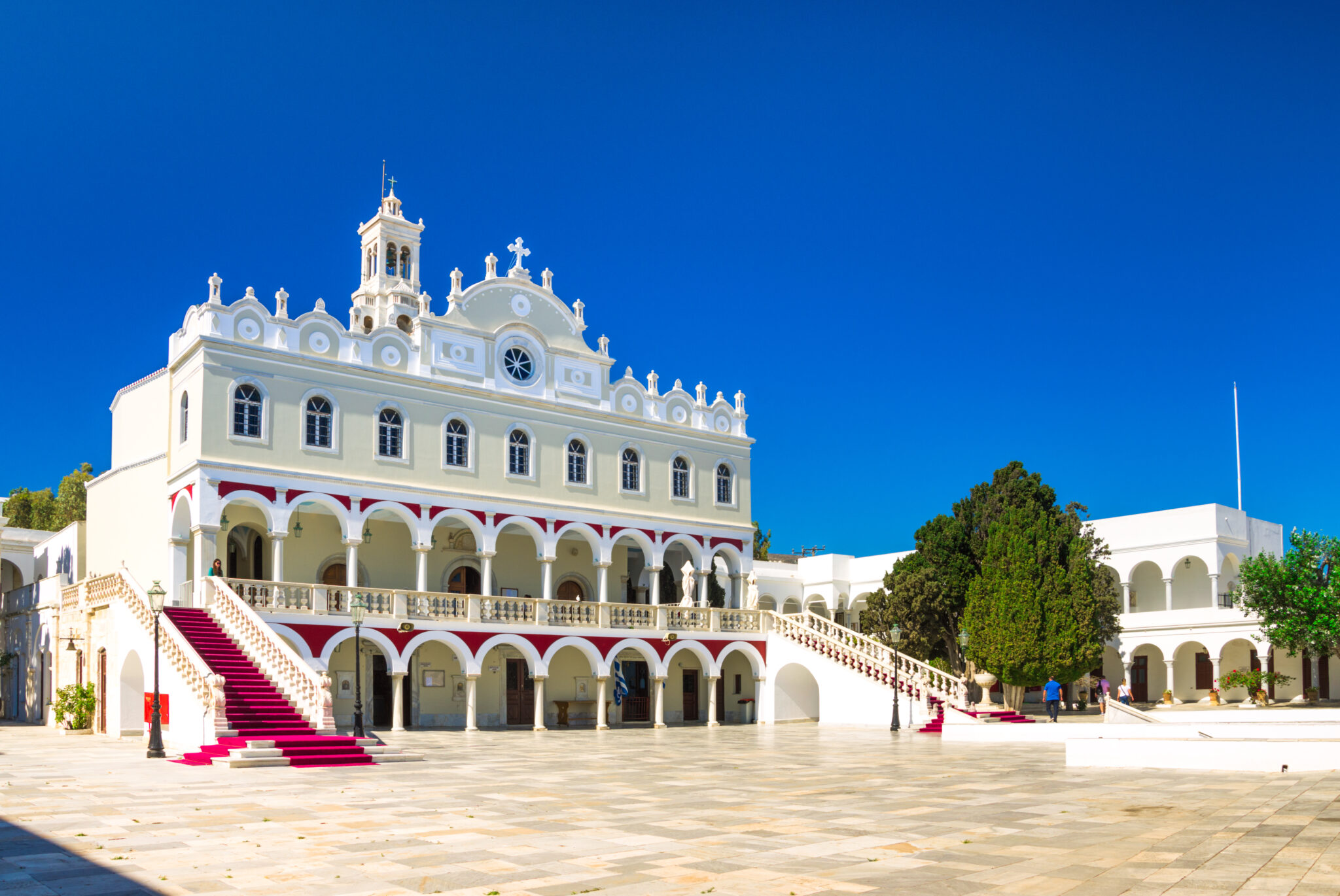Tinos, a Cycladic island, is celebrated for its deep-rooted connection to the fine arts. The island has been a cradle for renowned marble artists contributing significantly to Greece’s cultural landscape since the 19th century.
Visitors can witness the masterpieces of these artists, including Giannoulis Halepas and the Fitalis brothers, in various museums and cultural landmarks across Tinos. Here we highlight the key institutions that preserve and celebrate the island’s rich artistic tradition.
The Sculptors of Tinos
Tinos has birthed some of the most gifted marble artists in Greece and the world, who have gained widespread recognition for their exemplary creations. After 1830, the island pioneered the reconstruction and beautification of the newly liberated Greek state, emerging as Greece’s foremost centre of marble sculpture. The list of notable artists is extensive, including Giannoulis Halepas, the Fitalis brothers, Dimitris Filippotis, Ioannis and Georgios Vitalis, and Antonis and Lazaros Sochos. Sculptors and craftsmen from numerous villages of Tinos created the works that adorn each settlement, and today, some marble artisans continue to operate workshops in Ysternia and Pyrgos. Here, we introduce you to these artists and to the wonderful choice of cultural landmarks and institutions you can visit on the island.
Giannoulis Halepas
The most distinctive sculptor of Tinos was a tragically complex figure. Born in 1851 in Pyrgos, the son of a marble craftsman, he studied at the School of Fine Arts of the Metsovion Polytechnic and the Royal Academy in Munich. His creative journey is divided into two periods: before and post his mental illness, which led to his 14-year confinement in a psychiatric hospital in Corfu.
In the first period, influenced by neoclassicism and romanticism, he produced the works that immortalised him, such as “Satyr and Eros” (1877), “Medea”, and the “Sleeping Female Figure” (1878). In the second period, he created pieces expressing his inner impulses, which he often destroyed after their completion. He passed away on September 15, 1938.
Archaeological Museum
Constructed in the early 1960s, the exhibits presented at the museum come from two significant ancient sanctuaries: that of Poseidon and Amphitrite in Kionia and the Thesmophorion of Demeter (7th century BC) in Xombourgo. Don’t miss the marble sundial, a work by Andronicus of Cyrrhus (Tel. 22830 22670).
Tiniakos Cultural Foundation
A prominent cultural center of the island, established in 2001, it is housed in a neoclassical building from 1925 in the main town of Tinos. The foundation includes a Conference, Exhibition, and Research Centers, and the library and charming outdoor café are open to visitors. There’s a permanent collection featuring works by Giannoulis Halepas, and the foundation regularly hosts temporary exhibitions during the summer months (Tel.: 22830 29070, https://itip.gr).
Museum of Tinos Artists and Halepas’ House
At the Museum of Tinos Artists, you’ll see characteristic works by artists from Pyrgos and Ysternia – such as Giannoulis Halepas, Dimitris Filippotis, Ioannis Voulgaris, Ioannis Lampaditis, Georgios Vitalis and others. In Halepas’ house, you can explore his workshop, his austere bedroom, some personal belongings, sketches and sculptures (Tel.: 22830 31290).
The Kostas Tsoclis Museum in Kampos
As its name indicates, the museum primarily showcases the artwork of Kostas Tsoclis, but also acknowledges the work of other artists who have followed similar paths. Housed in a renovated former primary school, the museum combines classical and modern elements and engages the public through activities such as lectures, seminars, outdoor screenings, and performances at the Theater of Koumaros. Additionally, a special program for sightless children promotes inclusivity and access to art. (Tel. +302283051009).
Museum of Marble Crafts in Pyrgos
The permanent exhibition at this exceptional museum focuses on pre-industrial and early-industrial Tinos. Among other things, you’ll see original marble works, clay models and plaster replicas, quarrying and marble-crafting tools, representations of a quarry and a marble-crafting workshop, as well as the richest collection of old marble sculptor designs in Greece (www.piop.gr).
The Museums of Evangelistria
Tinian Artists Museum
The Tinian Artists Museum, established in 1930, showcases over 100 artworks by prominent Tinos artists. The collection features sculptures and paintings donated by the artists themselves, acknowledging the support of the Holy Foundation and P.I.I.E.T. The sculptures span the 19th and early 20th centuries, influenced by various artistic movements. Renowned sculptors such as Chalepas, Sohos, Filippotis, and others are represented, along with notable painters like Gyzis, Lytras, Gaitis, and more.
Art Gallery of the Evangelistria Foundation
The gallery showcases the works of leading Greek 19th-century artists as well as valuable European masterpieces and African ivory carvings. An exhibition of icons and relics presents precious items from Tinos’ churches and monasteries.
Read also:
Best Gastronomic Experiences on the Island of Tinos
Tinos, Home to the Cyclades’ best Villages, is Ideal for Exploration beyond Summer



